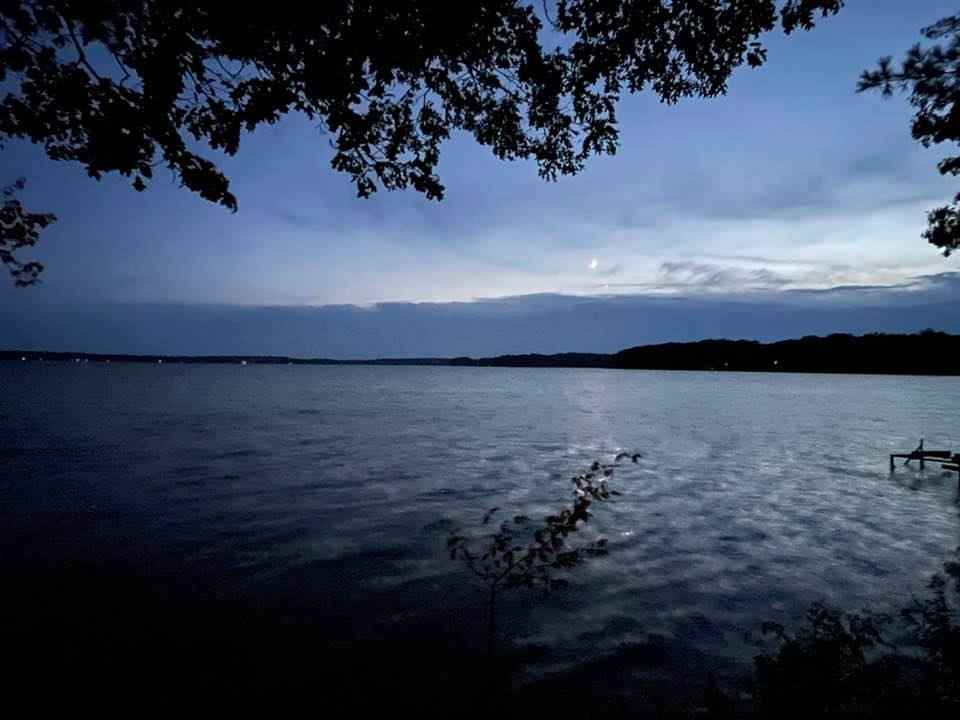OCTOBER 10, 2021 – Thirty miles from the Red Cabin, I stopped to buy a Subway sandwich. After grabbing the goods, I realized that I’d been subjected to . . . unnecessarily loud music. I wondered, For what purpose was it so loud? To keep the minimum-wage workers sufficiently alert not to confuse sliced cheese and sliced tomatoes? To apply marketing research that proves we’re more likely to “buy crazy” (the “full meal deal”) when surrounded by “crazy” than would be the case in quietude? Or because we live in a world in which we’re no longer comfortable with quietude?
“What did that music sound like?” I asked myself as I exited the store.
“A thunderstorm amidst a traffic jam in which everyone is honking,” I said.
Hours later I sat on our bench swing atop the berm along our shoreline. The sun had set a half hour earlier, and the brief twilight at this time of year would soon be yielding to nightfall. The temperature remained balmy, and a gentle breeze rippled the surface of the lake. Having arrived at the Red Cabin mid-afternoon, I’d gone straight to work pulling sections of our dock out for the season and later hiked in the tree garden. Now was time for a break.
From my station of repose, I admired the scene—lake, silhouetted shoreline bending away from our neck of the woods, and dark bank of clouds rising above the distant horizon. To render my vantage point more comfortable, I retrieved a cushion from the cabin. Upon returning to the bench swing, I noticed that a handsome duo—moon and Mercury—had appeared in the western sky, as if an invisible hand had flipped a switch somewhere in the fading celestial light.
Upon their ethereal stage, the heavenly pair danced unaccompanied by lesser lights. The crescent moon faced south, while Mercury, to the “lunar north,” pirouetted and descended slowly toward the rising cloud bank. While the “fastest planet” did its thing, the earth’s closest neighbor scattered moonbeams across the water to where I sat in nature’s grand theater.
As I observed the scene, I asked myself, “What music does this scene sound like?”
“Of course!” I said. “Moonlit Sonata!”
I took this “theme” a bit further, however. I contrasted it with other natural phenomena such as a pounding waterfall, a raging blizzard, a charging cheetah, and a flock of pigeons rising from a cathedral square (did you know they lift off like helicopters—straight up?)—all of which involve fast, spectacular motion. There’s also motion—big motion—in earth’s rotation, the moon’s revolution around earth, Mercury’s flight around the sun, and the advance of a weather front. But from second to second, motion seems to be absent from the celestial scene.
For the patient observer of natura magnifica, just as for the listener of musica magnifica, there are rewards in scenery that’s “slow-mo” and in music that isn’t commandeered to separate cheese from tomatoes or . . . to make you “buy crazy.”
(Remember to subscribe to this blog and receive notifications of new posts by email.)
© 2021 by Eric Nilsson
